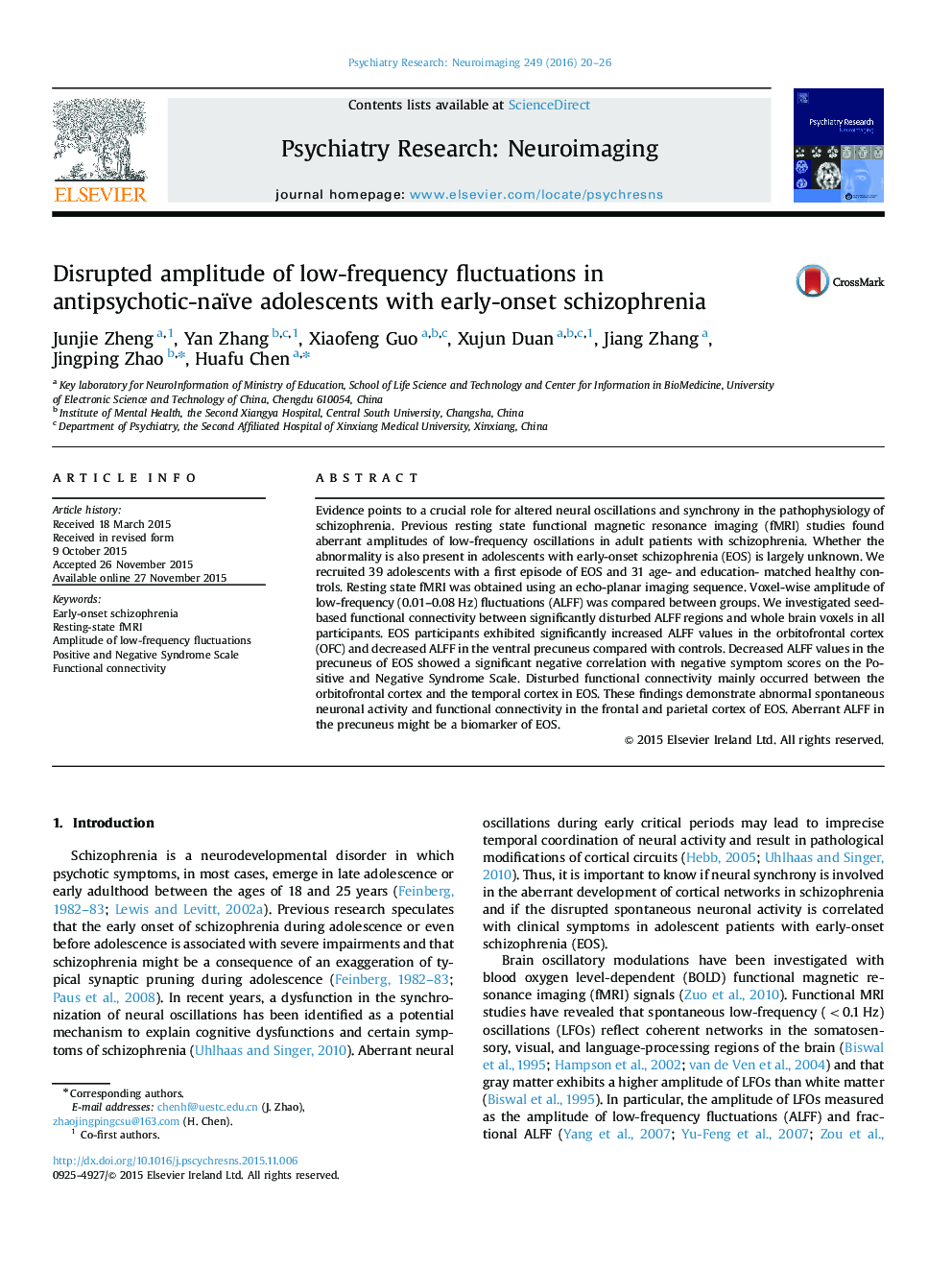| Article ID | Journal | Published Year | Pages | File Type |
|---|---|---|---|---|
| 335443 | Psychiatry Research: Neuroimaging | 2016 | 7 Pages |
•We compared ALFF values between early onset schizophrenia and healthy controls.•We found increased ALFF in orbitofrontal cortex of patients with EOS.•We also found decreased ALFF in precuneus of patients with EOS.•Reduced functional connectivity of the disturbed ALFF regions was found in EOS.
Evidence points to a crucial role for altered neural oscillations and synchrony in the pathophysiology of schizophrenia. Previous resting state functional magnetic resonance imaging (fMRI) studies found aberrant amplitudes of low-frequency oscillations in adult patients with schizophrenia. Whether the abnormality is also present in adolescents with early-onset schizophrenia (EOS) is largely unknown. We recruited 39 adolescents with a first episode of EOS and 31 age- and education- matched healthy controls. Resting state fMRI was obtained using an echo-planar imaging sequence. Voxel-wise amplitude of low-frequency (0.01–0.08 Hz) fluctuations (ALFF) was compared between groups. We investigated seed-based functional connectivity between significantly disturbed ALFF regions and whole brain voxels in all participants. EOS participants exhibited significantly increased ALFF values in the orbitofrontal cortex (OFC) and decreased ALFF in the ventral precuneus compared with controls. Decreased ALFF values in the precuneus of EOS showed a significant negative correlation with negative symptom scores on the Positive and Negative Syndrome Scale. Disturbed functional connectivity mainly occurred between the orbitofrontal cortex and the temporal cortex in EOS. These findings demonstrate abnormal spontaneous neuronal activity and functional connectivity in the frontal and parietal cortex of EOS. Aberrant ALFF in the precuneus might be a biomarker of EOS.
